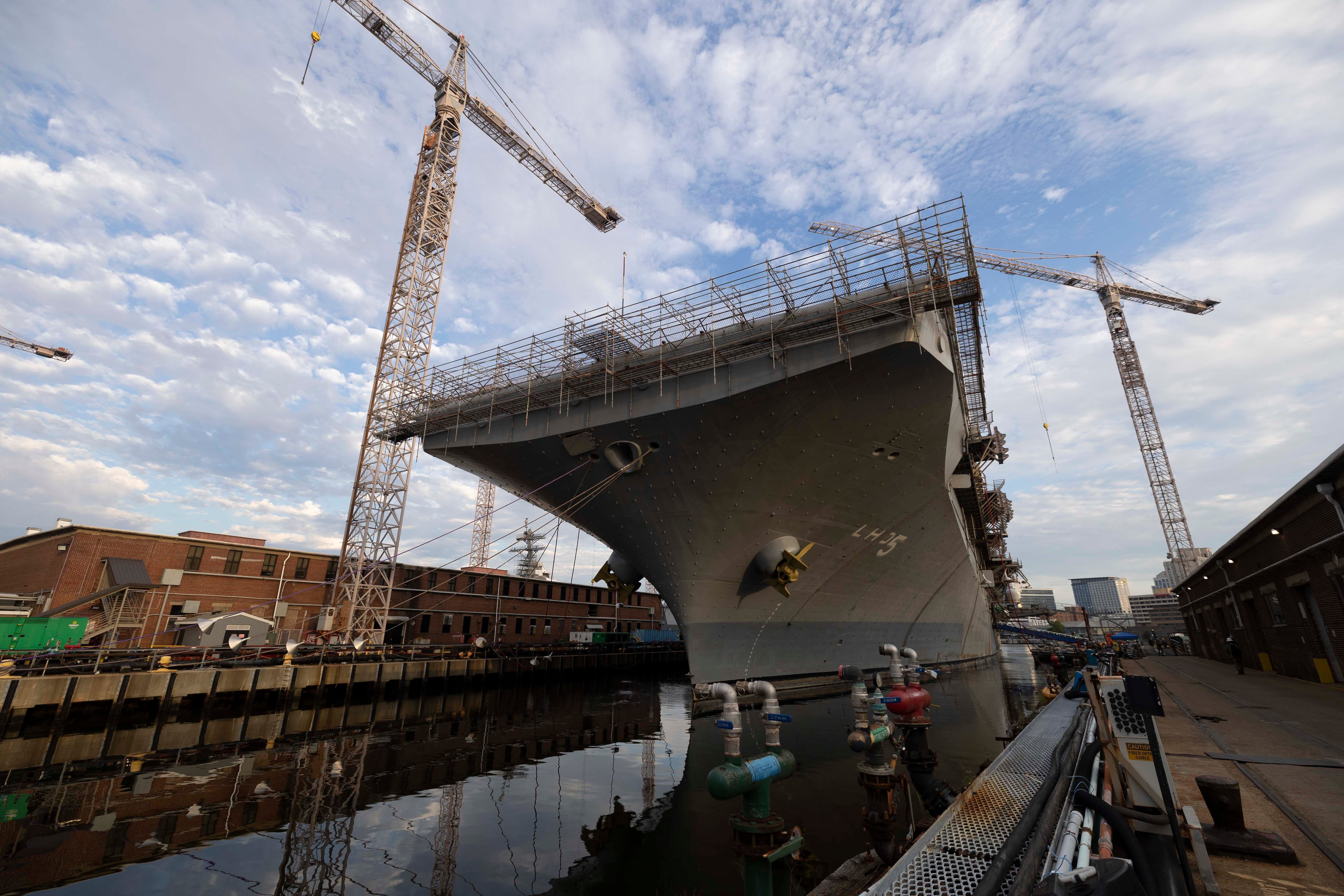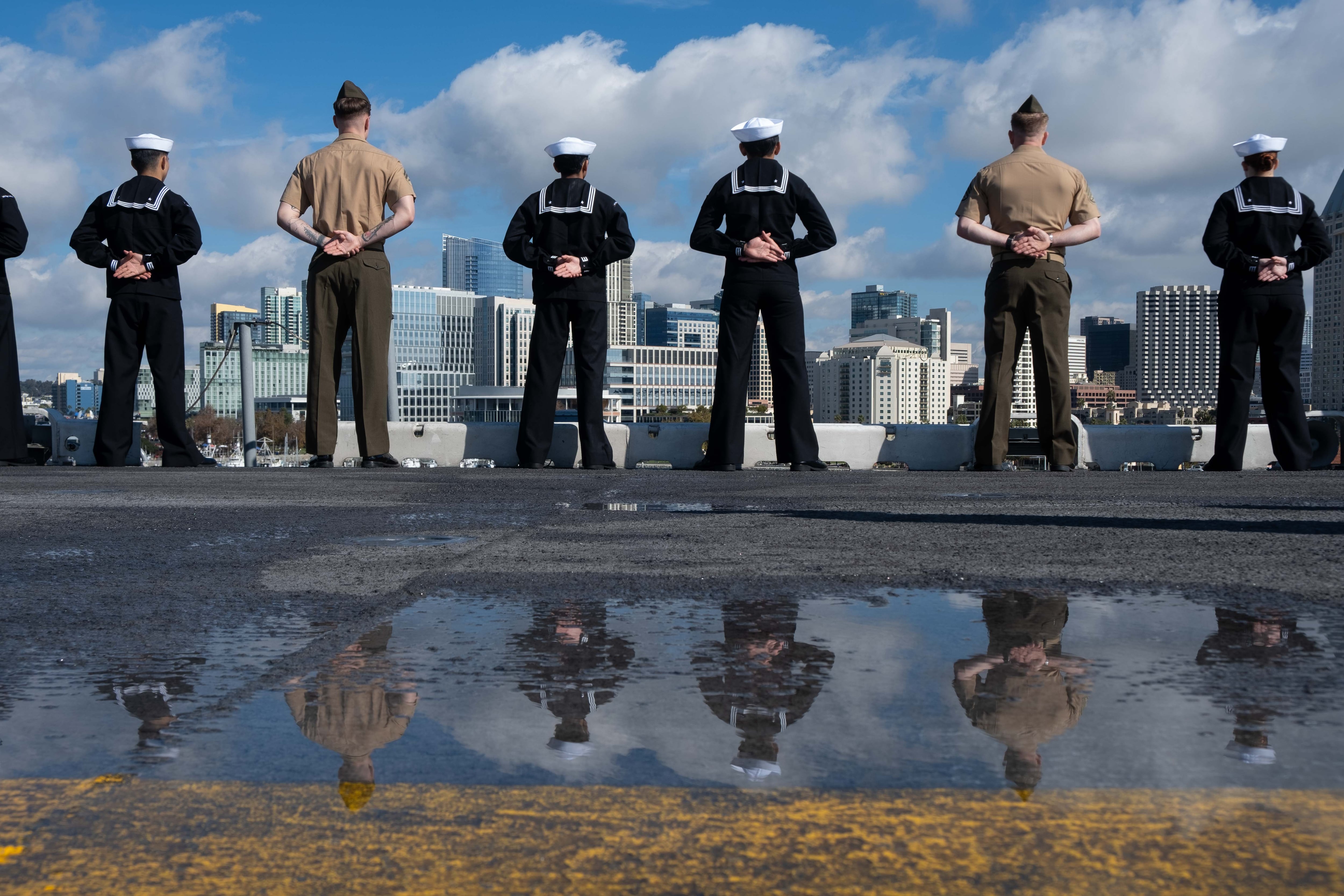NATIONAL HARBOR, Md. — The top Marine has a key objective for the Corps: getting Marine Expeditionary Units back on full deployment schedules.
But he’s going to need some help.
“My top priority ... is restoring a 3.0 MEU presence worldwide,” Commandant Gen. Eric Smith said April 7 at the Navy League’s annual Sea-Air-Space Exposition.
More specifically, that means a three-ship MEU with an Amphibious Ready Group, or ARG-MEU, deployed out of the East Coast, one out of the West Coast and a third on periodic deployments out of Okinawa, Japan.
The primary impediment? Amphibious ships.
The Corps needs 31 amphibious ships under law at a readiness level of 80% or greater to consistently meet that need, Smith said. But the readiness of that fleet is hovering at about 50% at any given time.
RELATED

An Amphibious Ready Group includes an assault ship, a landing ship with helicopter platform and a dock landing ship. The MEU consists of a battalion landing team, aviation combat element and combat logistics element to form a Marine Air Ground Task Force.
Bringing the amphib fleet back up to speed will cost maintenance and procurement dollars over multiple years, Smith said. It will take the Marine Corps, the Navy, Congress and shipbuilders.

Smith didn’t shirk the Corps’ role in the state of the fleet. After two decades of land-based wars in Iraq and Afghanistan, the Corps had largely left its fleet behind. Money for maintenance and building new ships went to those wars instead.
And the way the four-star sees it, a 3.0 presence is the bare minimum. That’s because combatant commanders are requesting the combat power of more than five MEUs throughout the years, he said.
Marine Corps Times reported in December that the Government Accountability Office had audited Naval Station Norfolk, Virginia, and Naval Base San Diego, California, regarding amphibious ship maintenance status.
From 2011 to 2020 amphibs were only available for operations 46% of the time.
Also, in 2024 the Boxer and America amphibious readiness groups missed exercises and experienced delayed deployments due to the unavailability of vessels.
One ship had not deployed in 12 years due to maintenance issues.
At the time, Marine spokesman Lt. Col. Joshua Benson told Marine Corps Times, “The current state of readiness impacts the Marine Corps’ capacity to support Combatant Commander’s needs, to maintain a 3.0 presence with Marine Expeditionary Units performing heel-to-toe deployments, and ultimately limits our ability to respond to crisis around the globe.”
Beyond regular maintenance and catch-up work, the lifespan of much of the fleet is in doubt.
Out of 32 amphibious-warfare ships, 16 are not expected to reach their 40-year service life. But the entire fleet must serve beyond that time limit to maintain at least a 31-amphibious warfare ship requirement, according to the report.
Also at the expo Monday, America’s largest naval shipbuilder, HII, reached an agreement to partner with South Korea’s HD Hyundai Heavy Industries to boost shipbuilding across numerous vessel classes.
“By working with our shipbuilding allies and sharing best practices, we believe this [agreement] offers real potential to help accelerate delivery of quality ships,” Brian Blanchette, HII executive vice president and president of Ingalls Shipbuilding, said in a release announcing the partnership.
Todd South has written about crime, courts, government and the military for multiple publications since 2004 and was named a 2014 Pulitzer finalist for a co-written project on witness intimidation. Todd is a Marine veteran of the Iraq War.





